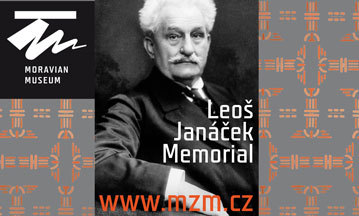Benjamin Britten: Four Sea Interludes from the Opera Peter Grimes, Op. 33a
Antonín Dvořák: Biblical Songs, op. 99
Richard Wagner: Tristan and Isolde (Prelude and Liebestod)
Leoš Janáček: Sinfonietta, JW VI/18
Arguably the most important British composer, Benjamin Britten drew attention to himself right away with his first opera, Peter Grimes, which he composed during the difficult years of the Second World War. It was a huge international success immediately after its premiere in 1945. The very refined score connects the individual scenes with remarkable interludes, which captivated with their compositional uniqueness and excellent instrumentation. Therefore, the composer edited them so that they could be performed separately in concert.
Antonín Dvořák's biblical songs were composed during the composer's American stay in 1894. Ten songs for alto with piano accompaniment are written to words from David's Book of Psalms. These are very simply conceived songs, but all the more impressive and spiritually powerful. Here, Dvořák talks intimately with God, full of trust and devotion. Immediately after the premiere, it was clear that Bible songs would be a kind of pinnacle of its genre. A year later, the composer also arranged the first five songs from the cycle for a symphony orchestra.
At the beginning of the 1950s, Richard Wagner became acquainted with the German philosopher Arthur Schoepenhauer's book The World as Will and Imagination, which fundamentally changed his view of being and, understandably, fundamentally influenced his opera work. The opera Tristan and Isolde, composed in 1857–59, is such a work. In the opera, Wagner exposes the inner world of the title characters, whose love, doomed from the beginning, finds fulfillment in death. The Prelude and Liebestod (Love-Death) form the beginning and end of the opera and are proof of Wagner's mastery and the ultimate example of romanticism.
The right counterpoint is Leoš Janáček's Sinfonietta. It is a composition full of energy and optimism for the future associated with the first years of Czechoslovakia. The composition was closely associated with Sokol. At the beginning of 1926, the composer was asked by the editors of Lidové noviny if he would write "some notes" as a greeting for the forthcoming VIII. All-school reunion in Prague. Janáček decided on fanfare. He started work in March 1926, and his fanfare eventually grew into an entire symphonic composition, which he called the Military Sinfonietta because of the participation of military music. This was offered to the organizers of the gathering and subsequently included in the program of the Czech Philharmonic concert dedicated to the youth of Sokol. The composer's novelty was heard for the first time on June 26, 1926 at a concert that was also broadcast on the radio. In addition to the players of the Czech Philharmonic, members of the Prague Garrison Music performed and the concert was a considerable success. The first printed edition of Janáček's famous composition in 1927 in the Universal Edition was then simply published under the name Sinfonietta, as we know it today, when it undoubtedly belongs to the top symphonic works of the 20th century.





